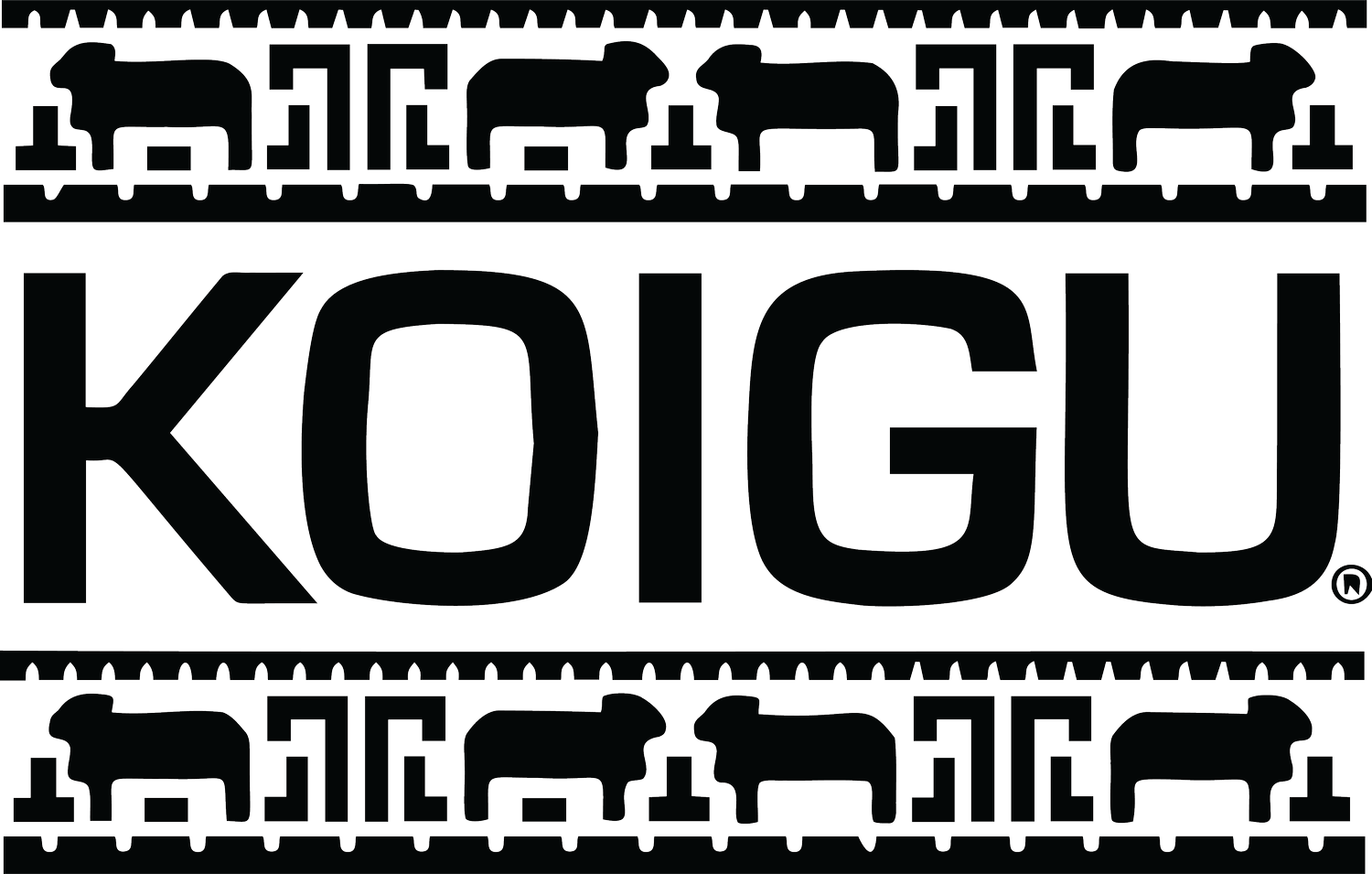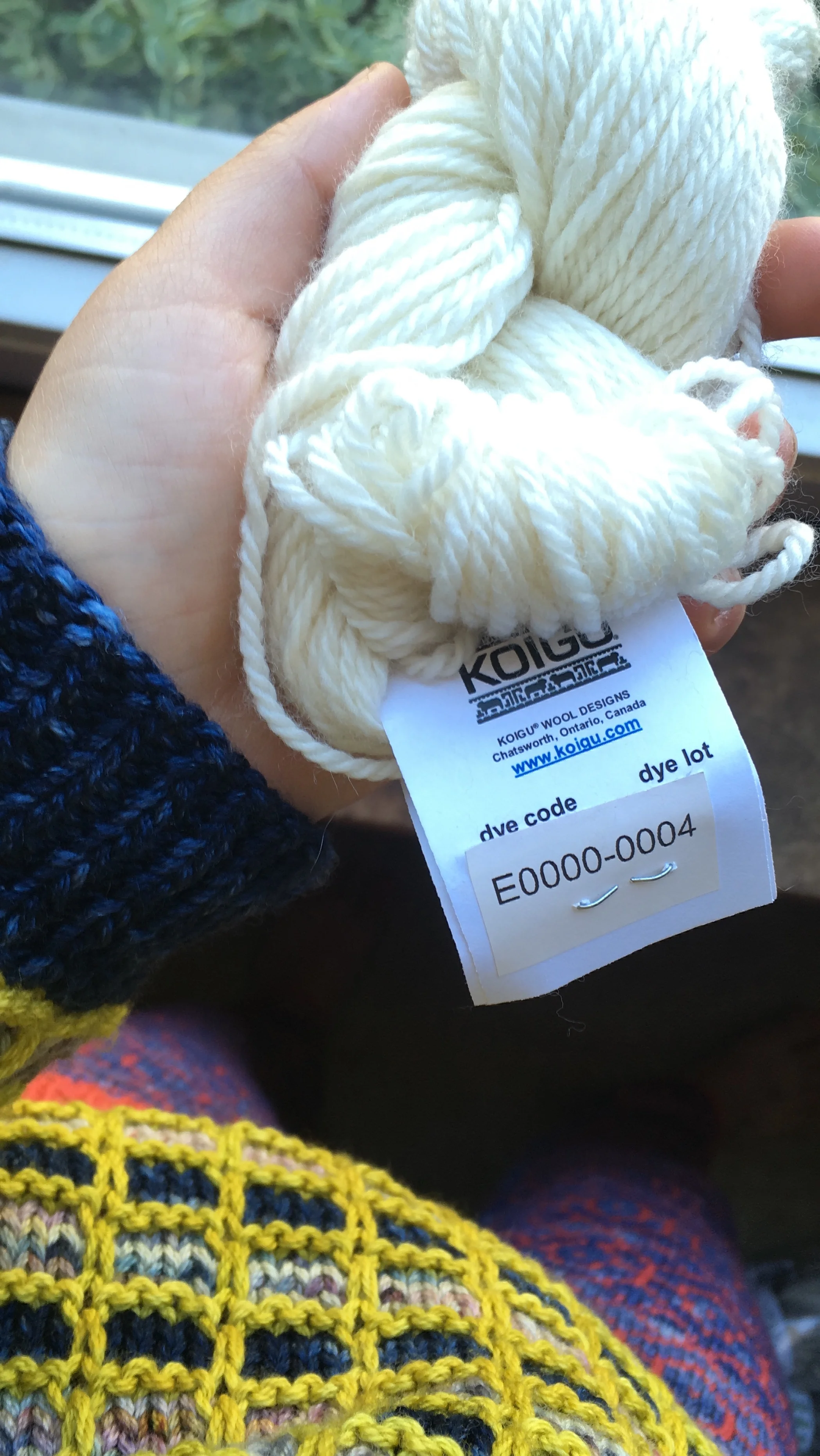We know that sometimes you may buy skeins of Koigu, planning a beautiful project to make, full well meaning to make it that very night, but something comes up and that skein gets hidden in your yarn stash for many moons. Months later, your crafty hands start to itch again and your Koigu finally gets pulled back out for a new idea! You then realize you need to order more of that colourway of yarn and you're not sure exactly what those letters and numbers mean on the label...
It's very simple and we're here to help!
All 9 of our bases of yarn here at Koigu have a different name that gets represented by a letter at the beginning of its color code on its label:
- P : short for KPPPM the Koigu Painter's Palette Premium fingering weight 100% merino
- K : short for Kersti the DK weight 100% merino
- L : short for Lace 100% merino
- S : short for Sparkle fingering weight 94% merino 6% lurex
- M : short for Mori fingering weight 50% merino 50% silk
- C : short for Chelsea Aran weight 100% merino
- O : short for Othello chunky weight 100% merino
- KS : short for Karmen (Silk) DK weight 100% silk
- E : short for Emmi DK weight 75% merino 25% cashmere
- any number that has no letter in front of it is a solid colour of KPPPM called KPM (simply Koigu Premium Merino)
Left to right: Lace, Mori, Sparkle, KPPPM, Emmi, Karmen, Kersti, Chelsea, Othello
The first number after the letter is your colour:
- 00s : slate series
- 100s : rainbow
- 200s : pinks
- 300s : browns blacks
- 400s : blues greens purples
- 500s : greens golds olives
- 600s : reds rusts golds
- 700s : stipples/speckles
- 800s : saturated colours
- 900s : unspecific
- 1000s : solids
- 999s : off colours or one-time dye lots
Second number or number after dash is your dye lot number:
- we hand dye and hand paint all of our yarns so knowing the dye-lot number will help you get as close as possible but you may not get exactly the same colour
This means you should always make sure you buy enough for your project, especially if you have large sections of a single colour! Maybe buy a little extra of that same dye lot while at store to get the best results.
And there you have it! Not too tricky after all once you know the basics!





